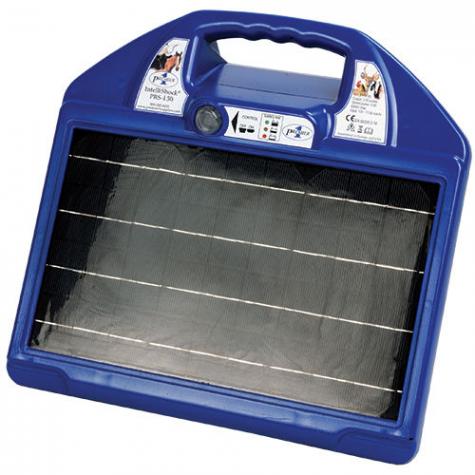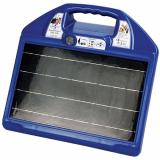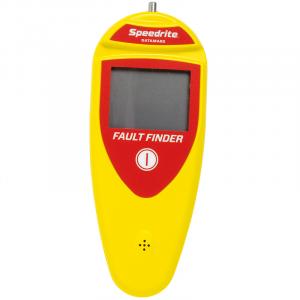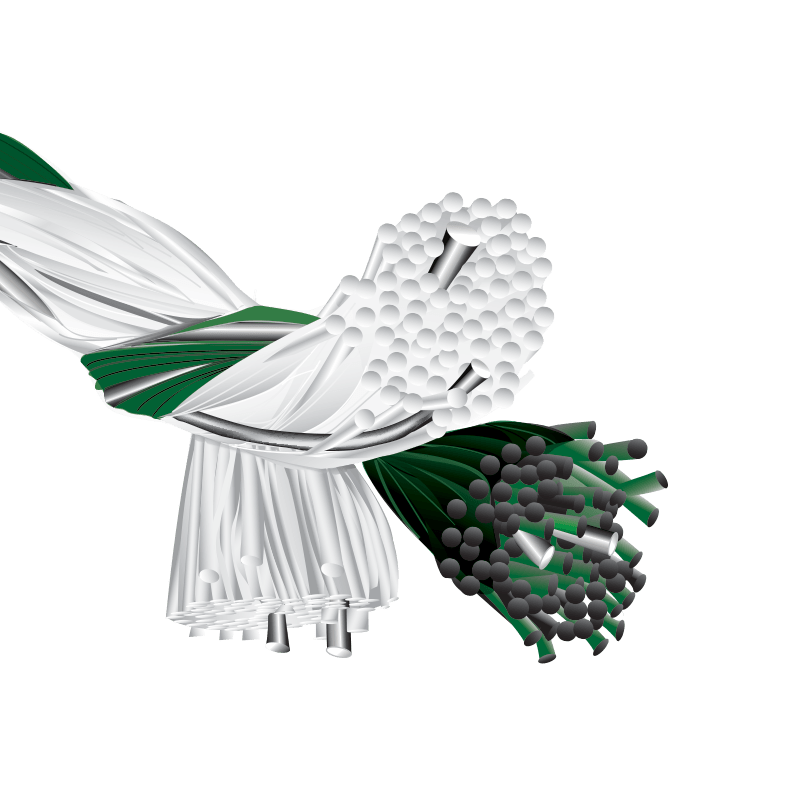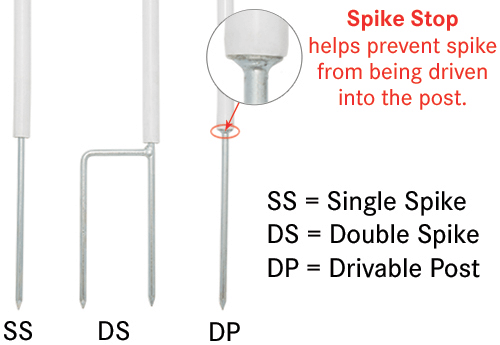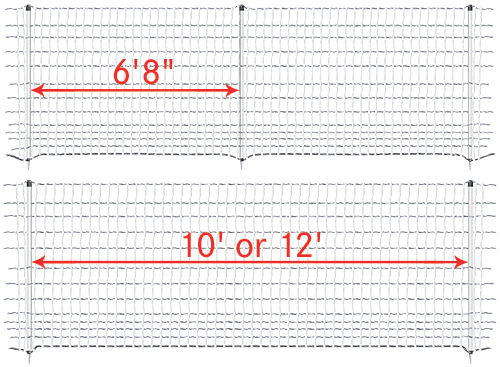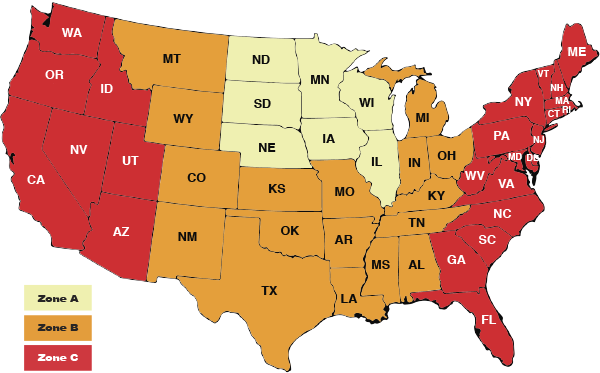UD - IntelliShock PRS-I 50 Solar Energizer
Product Details
Solar powered 0.50 joule energizer.
“PRS-I” units (for “Intelligent”) are able to reduce their energy demand when the fence’s voltage is high—due to few weeds touching the fence.
This occurs in fall and winter for most fences and occurs all year for some horse, cattle and deer fences.
So an “I” unit’s battery is more likely to remain charged through the low sunlight days of autumn and winter.
Common Uses
Specs
Includes:
- 1-Horizont 0.50 joule energizer
- 1-12 amp hour 12v sealed lead acid battery. If properly used and or stored, battery should last 3-4 years.
- 1-Wiring harness
- 1-Overcharge regulator
- 1-10-watt solar panel
- 110v Battery Recharger
- 1-Ground rod
- 1-UV treated, plastic carry case
- 1-T-post/"T" ground rod mount
Joules
- 0.50 released joules.
- 0.50 joules in moist soils.
- 0.24 joules in dry soils.
Miscellaneous
- Requires 1.5' of ground rod in the ground.
- Draw from a 12v battery is 20-50 milliampere (mA) per hour (depending on weed-load). With this energizer a 12v 100 ampere hour, deep cycle battery* will last approximately 125 days on a clean or 50 on a weedy fence. *Assumes being drawn down to 40% between recharges.
- 40 pulses per minute.
Should Power...
- 1 mile of 3 strand cattle fence.
- 1/2 mile of 5-7 strand sheep fence.
- 6-164' Sheep/Goat nets or 2-4 164' Poultry Nets.
Benefits
- To catch the sun's power in winter, simply lean it against a post. If you live in low-sun areas, do this in the late fall and early winter also.
- Won't rust. It's UV treat plastic.
How to Use
To use T-post & "T" ground rod mount: slide adapter over T-post or "T" ground rod. Slide unit onto adapter.
Winter Use—If you're not using your PRS unit during the winter follow these tips to preserve battery life:
- Turn off the unit. Disconnecting the unit from the fence is not sufficient, the unit will still pulse unless it is turned off.
- Clean off the solar panel. Dust and debris may have accumulated during use and as a result prevents the panel from maximum electrical production.
- Before the unit goes into storage, fully charge the unit. This will allow the battery to be topped off. Batteries that are 50% or less charged may become damaged in freezing temperatures.
- If possible, place the unit in a sunny area, this will allow the solar panel to continuously top-off the battery. The battery will lose charge over time even if the unit is disconnected from the fence and turned off.
If you're planning on using your PRS unit during the winter months, follow these helpful hints:
- Face the energizer due South, this will allow the panel to receive the maximum amount of light possible during the low-light days of winter.
- Instead of laying the unit on its back, stand up or prop up the unit (facing South) to allow it to receive as much light as possible.
- Hang the unit up (facing South), secure the top and base to prevent the unit from moving. This will keep the unit out of most snow drifts and allow accumulated snow to fall off.
- If the unit is not to be hung up, clear all debris off the panel, this includes grass clippings, dust (especially on gravel roads), leaves and snow. Do not place in shady areas, this will reduce light intake.
To use light tester WITHOUT ground probe
For Fence:- Touch the top of the tester to the electrified fence you wish to test.
- Push the button (if applicable).
- The tester will light up according to the voltage at that location on the fence.
- Turn off energizer.
- Disconnect ground wire and fence wire from energizer.
- Turn on energizer.
- Touch the top of the tester onto the top of the fence terminal on the energizer.
- Push the button (if applicable).
- The tester should light up to 6000 volts or more.
To use light tester WITH ground probe
For Fence:- Insert the probe of the tester into the soil.
- Remove your hand from the metal portion of the probe (to avoid a shock).
- To get a voltage reading, touch the metal clip (on the top of the tester) to the electrified fence you wish to test.
- The tester will light up according to the voltage at that location on the fence.
- Remove the tester from the fence and the probe from the soil. Do not remove the probe by pulling the insulated wire.
- Turn off energizer.
- Disconnect ground wire and fence wire from energizer.
- Turn on energizer.
- Touch probe from tester to ground terminal on energizer (be sure to hold onto the insulated wire and not the metal probe!)
- At same time touch the fence hook on tester to fence terminal on energizer.
- The tester should light up to 6000 volts or more.
Troubleshooting
- Test the energizer first
- Turn off energizer.
- Disconnect ground wire and the fence wire.
- Turn energizer back on.
- With fence tester, put the ground probe to the ground terminal on the energizer and the fence probe to the fence terminal. The reading you get tells you how well the energizer is working without any other variables. If there is a very low voltage (under 4000v) or no voltage, then the energizer may have a problem. If the voltage is high (greater than 4000v) then the trouble lies with your fence. Most energizers put out between 5000v and 8000v when there is no load (i.e. no fence hooked up).
If the energizer is faulty and you are using the Horizont energizer as a battery unit you need to learn if the battery or the energizer is the problem…
- If it's a 12 volt energizer carry the unit to a nearby vehicle and attach the input cords carefully to the vehicle's battery.
- If the energizer now works, then your fencer's battery needs to be recharged or replaced.
- If the energizer does not work, then you should call Premier re. repairs.
If you lack a Fault Finder…
- Walk or drive along the fence looking for any point in which the energized wires touch the soil, a steel post or a steel wire. On HT wire fences, check the wires at braces to see if they are touching a hot wire. On netting, look for a hot wire touching the metal stake at the bottom of the plastic posts. Also look for damaged insulators.
- If the fence can be separated into several parts (by switches or by disconnecting parts of it), you can locate the problem by beginning at the far end and then progressively turn off or disconnect the sections of fence. When the voltage on the remaining fence rises sharply, you've located the section(s) that's causing the problems.
- The alternative to (2.) is to begin at the fencer and progressively turn on sections of the fence. When the voltage suddenly drops you can assume that the problem is in the section most recently connected.
-
Fence Connectors and Accessories
Digital Battery Meter
Item #125100 -Used to determine when a 12 volt battery needs to be recharged. Touch “+” and “-” probes to the corresponding battery terminals to measure voltage.
$25.50 -
Fence Connectors and Accessories
Digital Voltmeter
Item #132000 -Accurately tests the voltage of an electric fence. Useful for troubleshooting energizer issues too.
$46.00 -
Fence Connectors and Accessories
Fence Fault Finder
Item #133500 -Tests electric fences and determine fault locations with the press of the button. Save time in the field and reduce troublesome electrical shorts.
$119.00 -
Fence Connectors and Accessories
Live Fence Indicator
Item #133515 -For instant reassurance that your fence is working. Clip to your fence line and watch for the flash when you pass by. No batteries required.
$45.00 -
Fencing
Warning Sign
Item #346000 -Let passersby know that your fences are electrified with this easy-to-read electric fence warning sign.
$2.50
-
Fence Connectors and Accessories
Bare Wire Terminal Harness
Item #130820 -Wiring harness fits most electric fence energizers. Alligator clips for attaching to fence (positive) and ground rod (negative). Ring or bare wire ends.
$9.00 -
Energizer Solar Panels and Accessories
T-Post Adapter & Ground Rod Mount
Item #114010 -Enables Solar IntelliShock 30/60/100/120/180 and PRS I25/B50/I50 units to be mounted onto standard T-Posts or T ground rods.
$5.00
Write a Review
You must be logged in to leave a review. Please sign in.


